Hoya plants are beautiful indoor plants that are part of the apocynaceae family. They’re well known for the fragrant flower buds, long vines and waxy leaves.
There are many different species of Hoya plants out there. There’s even different varieties of Hoya carnos plants!
From the Hindu Rope Plant to the Tri-Color to the Krimson Queen and Grey Ghost variety, there’s dozens, potentially even hundreds of cultivars out there.
Today I’m going to share all you need to know about the Hoya Carnos plant.
Table of Contents
Hoya Carnos Plant Care Background
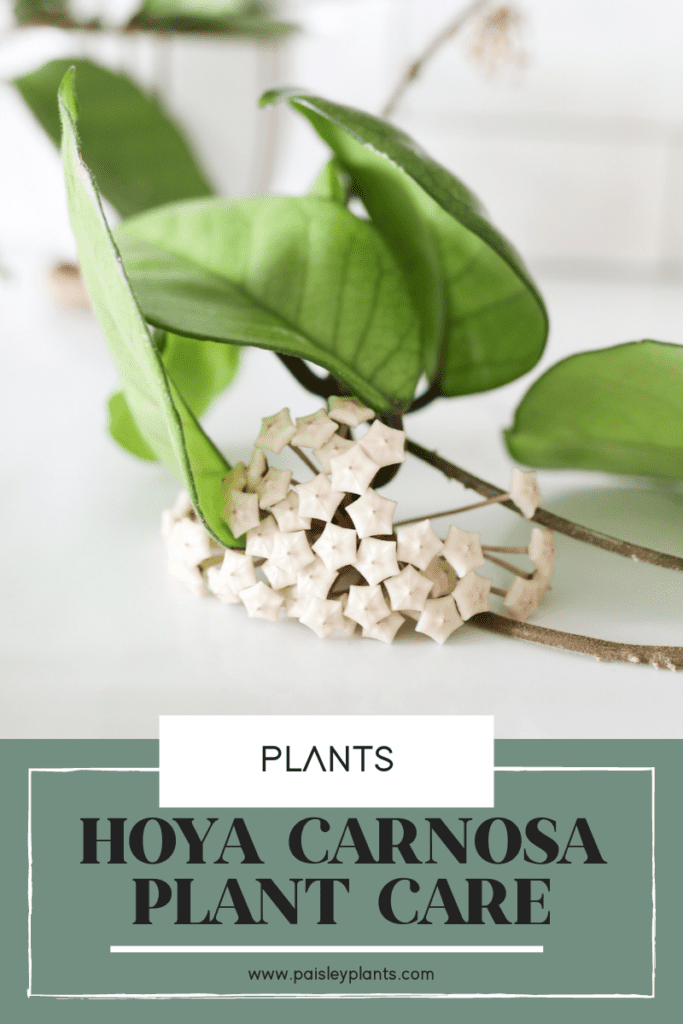
This post includes affiliate links.
The Hoya carnosa (scientific name) plant goes by the common names porcelain flower, wax plant and waxy leaf plant.
This plant, native to eastern Asia and Australia and has waxy leaves and sweet scented flowers. They have globalized and become a beloved houseplant worldwide; they are revered for their unique leaves, beautiful white flowers, and low-maintenance.
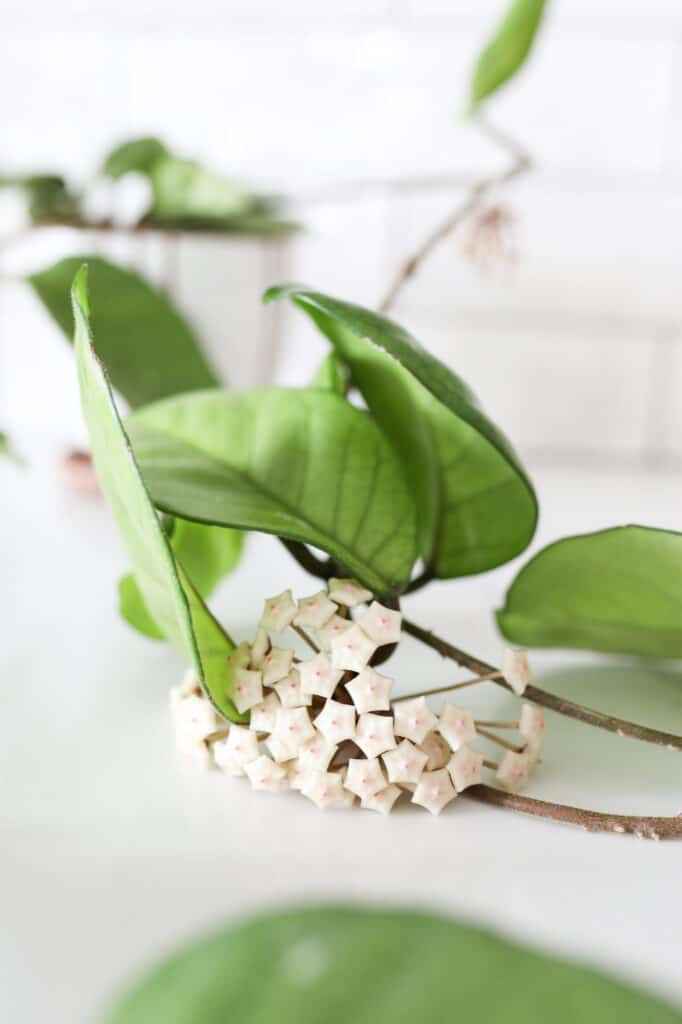
What separates the compacta variety from your standard hoya plants is that the compacta variety has a pendulous growth pattern. This plant grows a vine of succulent leaves in a spiral formation. This trailing plant can reach a length of 15 inches long, making it perfect for a hanging basket.
Starting in spring and early summer, you’ll see amazing Hoya flowers blooming. These pink and white star-shaped flowers grow in ball-shaped formations and are known for being fragrant and lasting a few weeks.
These plants are non toxic to pets and humans.
Growing Preferences
Sun & Light
Hoya carnosa plants do best in bright indirect light year round. Be careful to not give your plant too much bright light. Direct sunlight could cause severe damage to the foliage.
Hoya plants can survive in low light and medium light. However, without enough light you likely won’t see any new flowers blooming. I have mine sitting on a windowsill in a North facing window and this has proved to be a great light source since mine started producing flowers!
Water
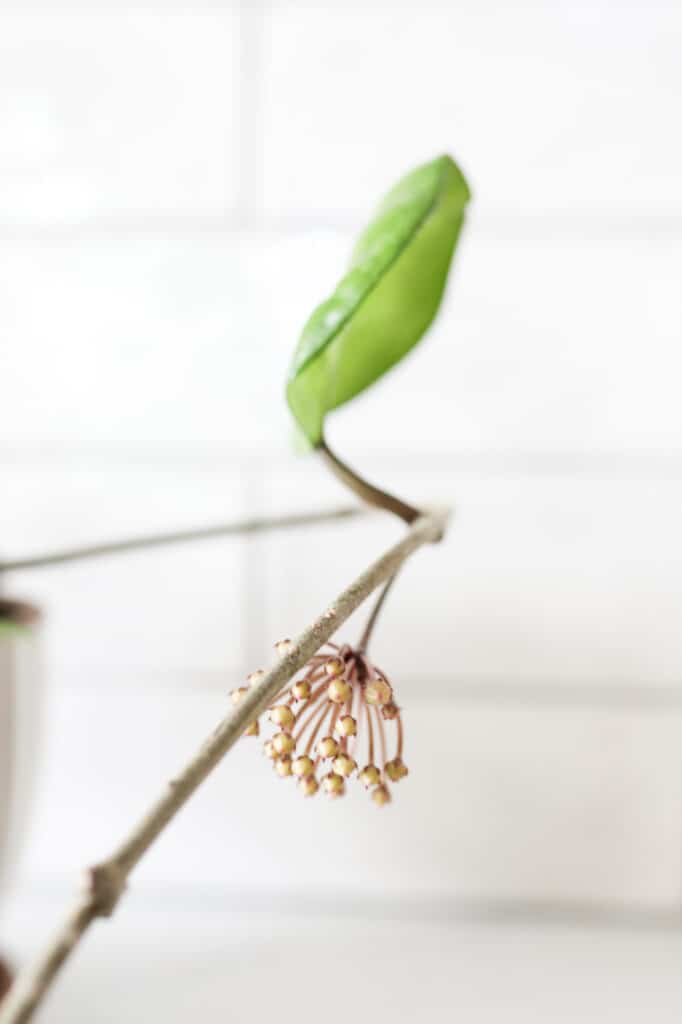
The Hoya Carnos is a semi-succulent with succulent-like leaves. This means they store water in their fleshy thick leaves. Watering your plant will depend entirely on the season changes.
During the active growing season (spring and summer), your plant will need regular watering. However, you should only water your plant once the soil has dried out completely.
Too much water is not good for a hoya carnos plant. Always use room temperature water when watering your tropical plant.
During the winter months when your plant is in its dormancy period, you should be much more conservative with your watering. Instead, focus more on maintaining a proper humidity level.
Soil
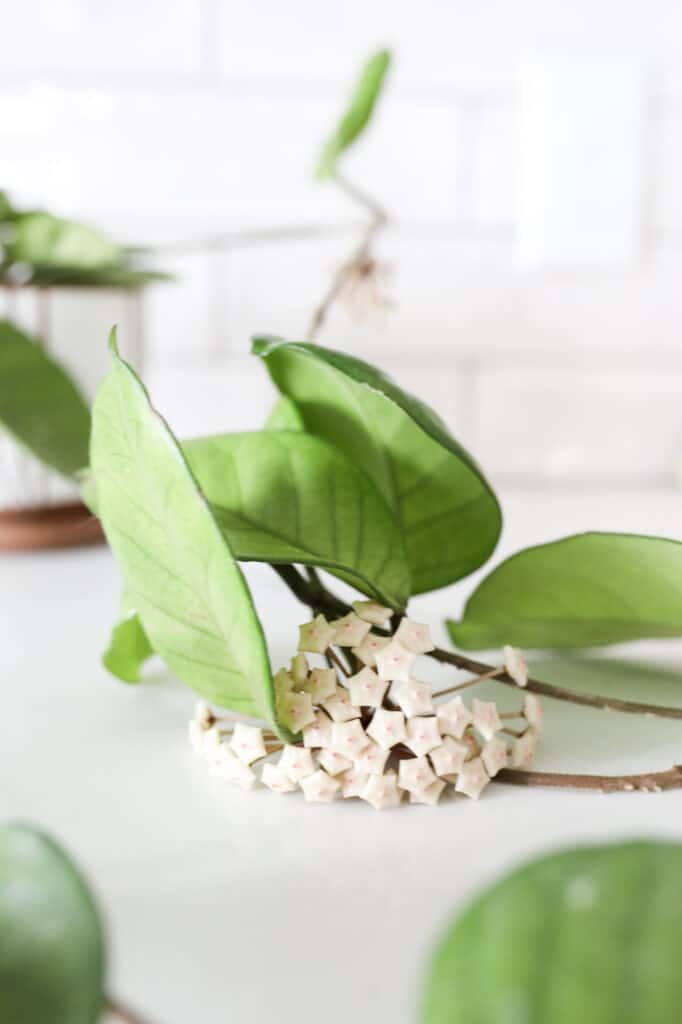
The Hoya carnos plant is a vining epiphytic plant. This means they can grow on the surface of trees or other plants. Because of this, the ideal soil for this plant is a light, airy soil. Waterlogged soil will be deadly to your plant, so it is recommended that you include perlite and orchid bark to increase the drainage.
Fertilizer
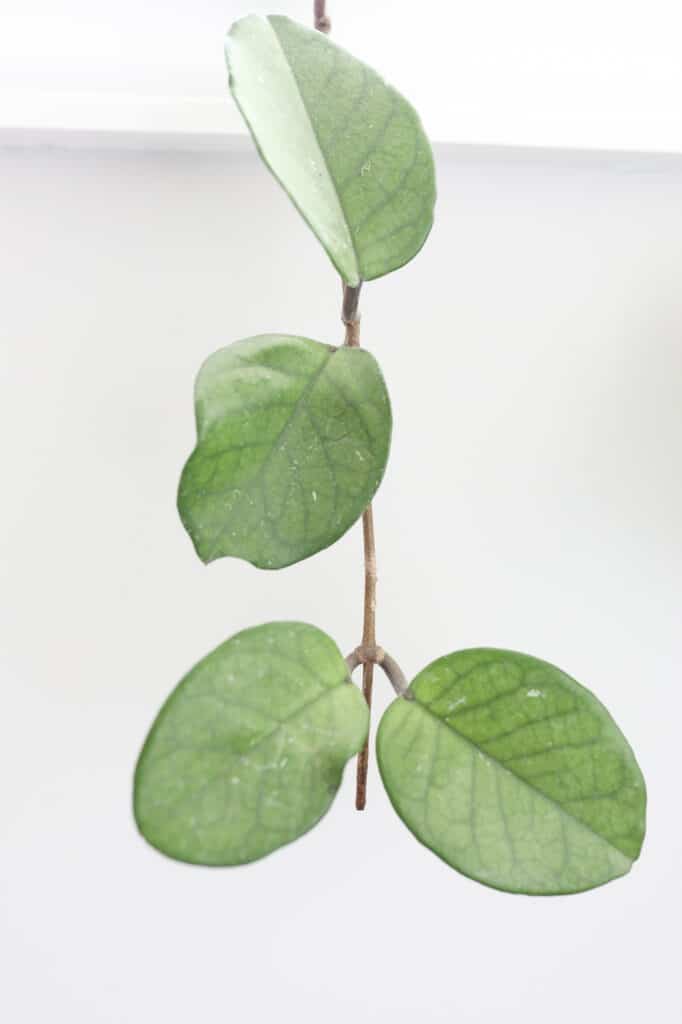
Fertilizer is highly recommended when caring for a Hindu rope plant. It promote vigorous growth in both the foliage and the flowers. Feed your plant with a weak fertilizer solution every couple of months.
Stop fertilizing entirely during the winter; your plant will not need fertilizer in its dormant period. A fertilizer with a high potassium content will help produce the best flowers.
Temperature & Humidity
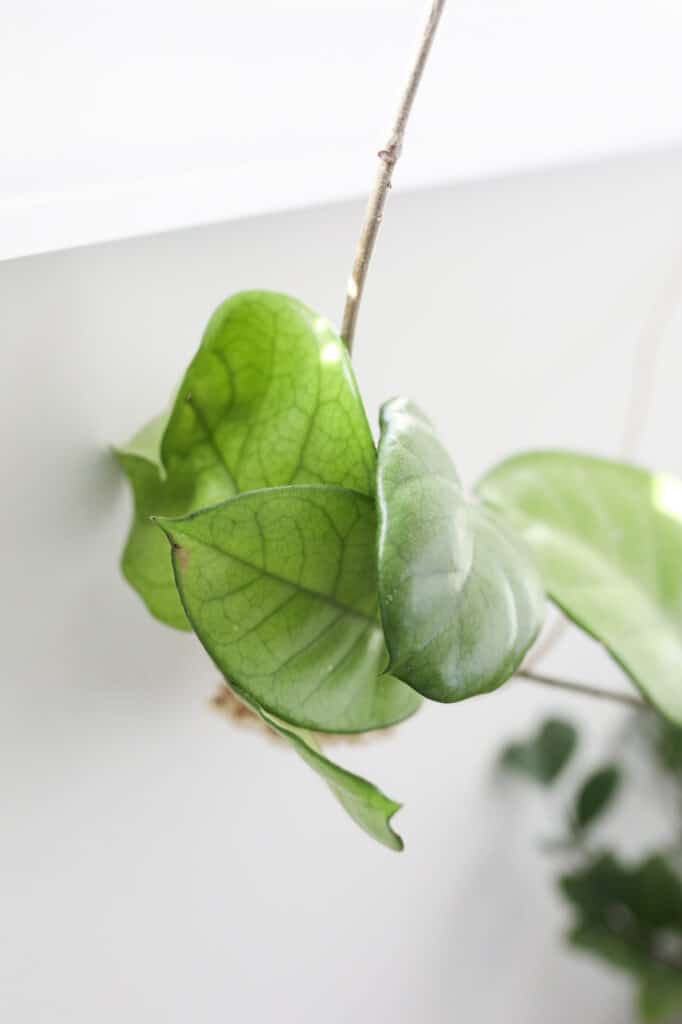
Hoya carnos plants enjoy high humidity. The ideal daytime temperatures for your plant should be somewhere between 65 and 80 degrees fahrenheit.
Avoid allowing it to be in cooler temperatures that dip below 55 degrees fahrenheit, making sure not to place your plant near air conditioning vents or drafty windows.
Your plant can lose its waxy look if exposed to low humidity. The best way to keep their waxy look is to keep it in a humid area. Humidity levels can be increased by introducing an air humidifier or placing your plant on top of a pebble tray.
Choosing a Container & Repotting
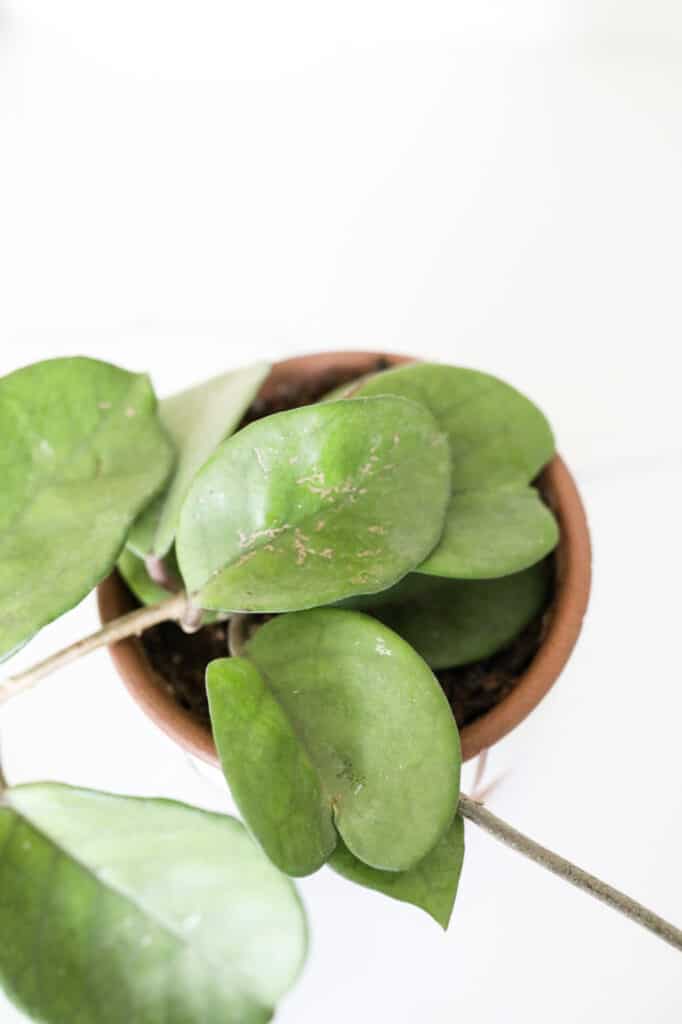
Hoya carnosa plants prefer to be root bound. Because of this, you don’t have to frequently repot it. It is recommended to grow them in a small pot with good drainage.
No matter what container you choose, one with drainage holes is best. Drainage holes at the bottom of your container will help expel excess water from your soil.
How to Prune Hoya Carnos Plant
Hoya carnos plants are fast growers, unlikely the Hoya carnos compacta which is a slow grower! You can either trim back long vines to keep it smaller and more compact or wrap them around a trellis.
The best time to trim them is early spring. These plants are part of the milkweed family so you’ll likely notice a milky white sap come out of their woody stems when you cut them.
Also, be sure to not prune stems where flowers have bloomed. These flowers will form year after year in the same spot and you don’t want to miss out of these beautiful blooms!
How to Propagate a Hoya Carnosa Plant
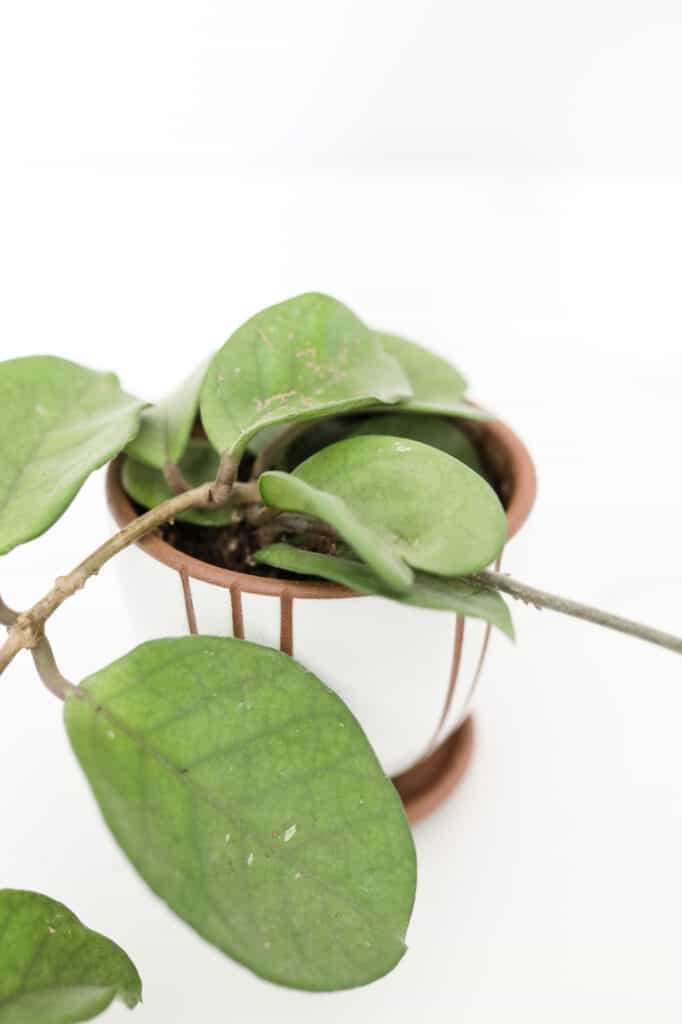
You can make one Hoya carnosa plant turn into multiple plants via propagation. They can easily be propagated by stem cuttings. Follow these steps to make it happen.
- Take a healthy piece of your plant. This piece of stem should be at least 4-6 inches in length and contain a pair of leaves.
- Remove the lower leaves from the stem, exposing the nodes. Leave your stem to dry out for the next 24 hours.
- You can either opt to root your stem directly in potting soil or water. Watch for a few inches of roots to form in the water before potting it. To check for roots in soil, give it gentle tug to see if there’s any resistance!
- You may opt to dip your cut-end in rooting hormone powder, which will increase the likelihood that your cutting will form roots.
*Head here for my favorite propagation stations!
Pests
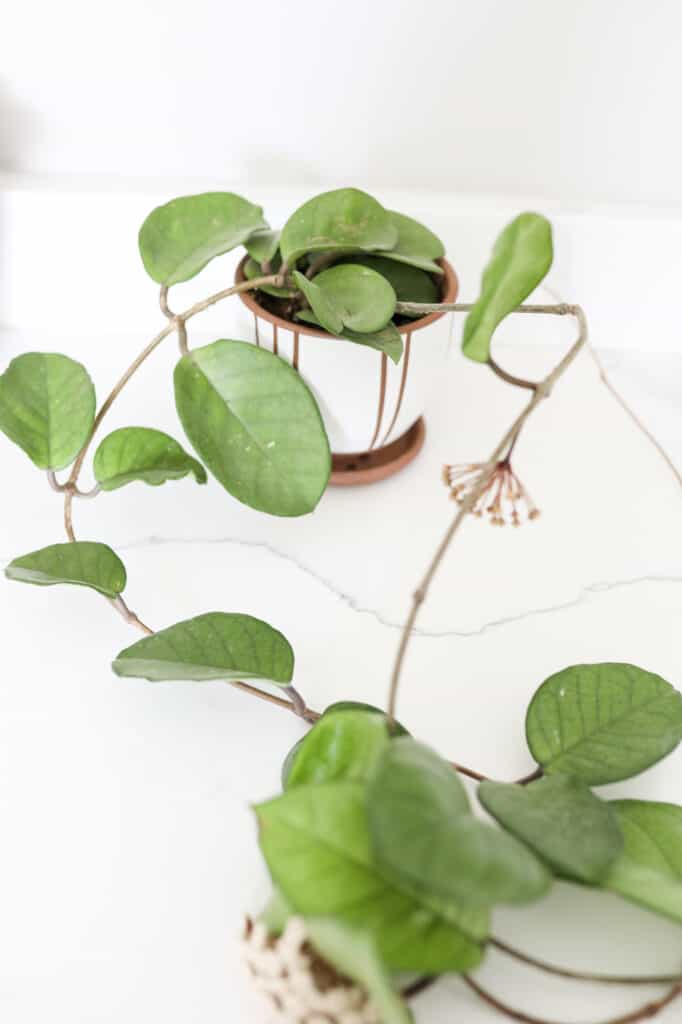
Like all plants, keep an eye out for pests. In the case of overwatering, fungas gnats may be likely. You may also find mealy bugs in the wet soil as well. Also keep an eye out for spider mites although those are much less common.
While these are very annoying pests to deal with, they are fully treatable. I would recommend pruning any foliage that has been damaged by pests. Treating your plants with a horticultural oil or an insecticidal soap is also effective in controlling your pest problem.
Diseases
Root Rot
Root rot is the combination of improperly overwatering your plant combined with a lack of drainage. Signs of root rot include yellowing, dying foliage. If you suspect this is happening to your plant, take the root ball out from the container and inspect the roots.
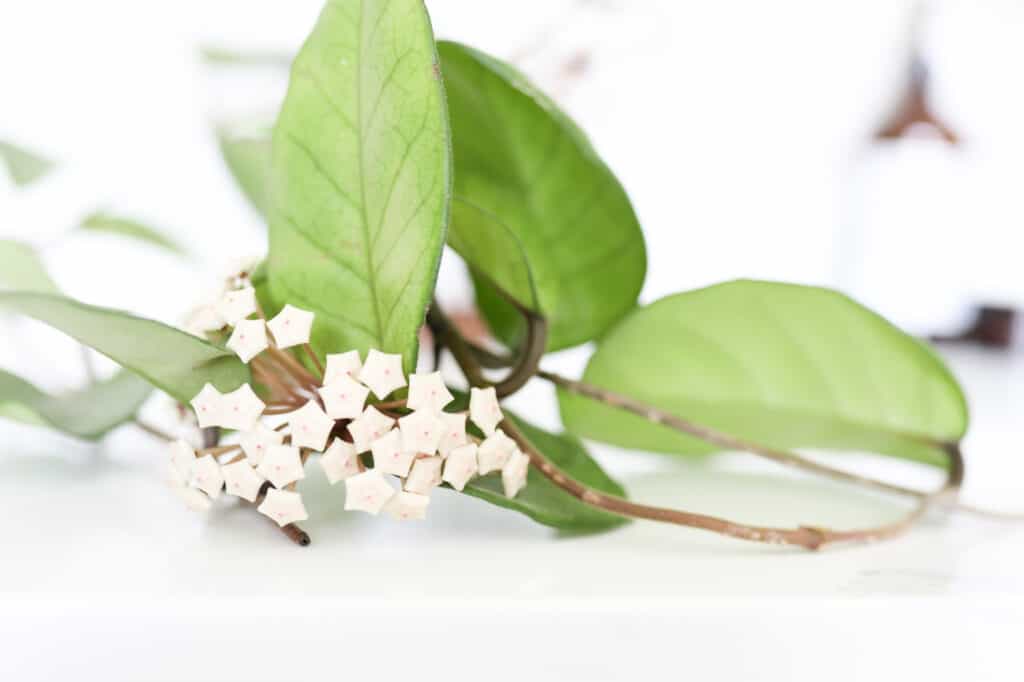
Rotted roots are black and mushy to the touch. Take a sterile pair of scissors and cut away all signs of rot and repot your plant in a cleaned planter with fresh soil.
Root rot is only treatable when it is caught early, so it is best to prevent root rot from ever happening by providing the right conditions for your plant. Remember that your Hoya carnos plant does not enjoy overly wet conditions.
When you water your plant, you should wait until the soil has completely dried before watering again. In addition, make sure you have a well-draining potting mix for your plant, as well as a plant pot with ample drainage holes.
Common Problems
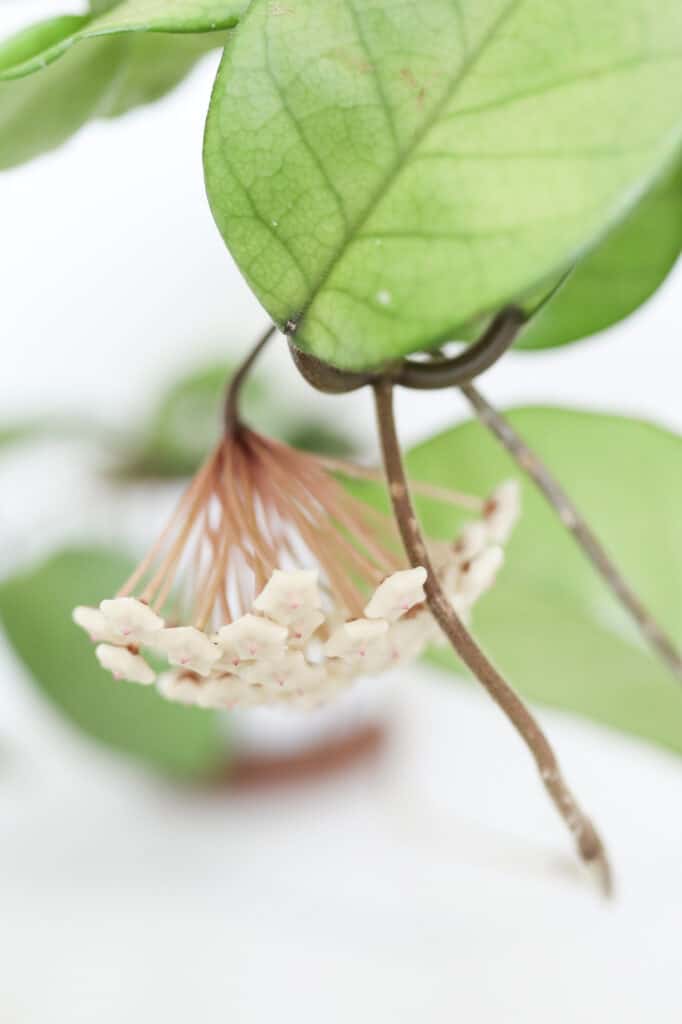
“My plant is limp!”
A limp plant is likely due to watering issues – either overwatering or underwatering. As long as the root system is fine you can easily revive your plant! Check the soil – if it’s soggy, give it time to dry out and see if that helps. If it’s dry, give it a good watering.
“My plant’s leaves are turning a different color!”
If your plant is turning yellow, there’s a good chance your plant is being overwatered. Check the soil to see if it’s damp.
If your leaves are turning brown, you’re likely not watering it enough or it’s getting too much direct sun or not enough humidity.
Where to Buy
Hoya Carnosa plants are some of the easiest hoya plants out there. From the stunning flowers to their wax leaves, they’ll make a statement in any room! I hope these care tips and tricks help you know exactly how to grow your new plant!
If you love hoya carnosa, be sure to check out the hoya carnosa compacta!

